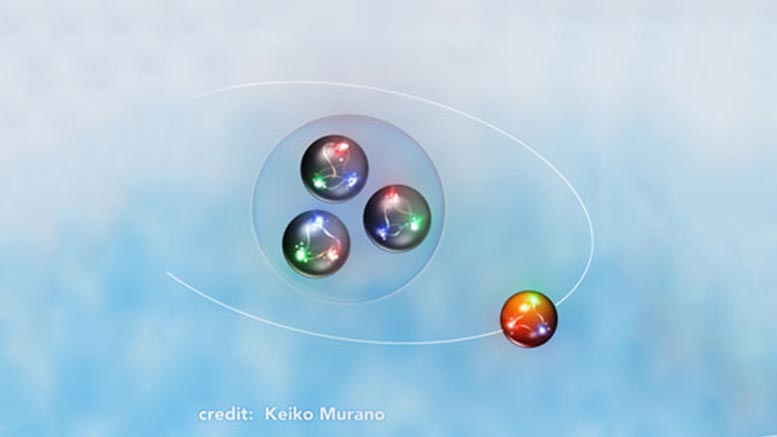

Since the strange numbers of the pion and proton are both zero and the kaon has a strangeness of +1, we know that the lambda particle's strangeness is -1. For example, in a reaction where a negatively-charged pion interacts with a proton, a neutral kaon and a neutral lambda particle are formed.

We can find the strangeness of a particle by using the law of conservation of strangeness. For more information see the chart The Standard Model of Fundamental Particles and Interactions. The strangeness of nucleons is zero, because they only contain up and down quarks and no strange (also called sideways) quarks. Of the six flavors of quarks, only the strange quark has a nonzero strangeness. The strangeness of a particle is the sum of the strangeness of its component quarks. It is a property of subatomic particles, and only applies to those known as hadrons, which include protons, neutrons, pions, kaons, and lambda, omega, and rho particles, among others. The next year it was clearly demonstrated experimentally. It was postulated (discovered) in 1953, by M. Strangeness is the name given to the fifth quantum number. Spin Spin Hypercharge Strangeness Baryon Number Charge Here are the quantum numbers of the light particles: The first three are known as "light quarks", while the latter three are "heavy quarks." (See the chart for more information.) There are six quantities called quantum numbers that describe every elementary particle, and each type of quark has its own set of quantum numbers. The six types of quarks are up (u), down (d), strange (s), top (or truth, t), charm (c), and bottom (or beauty, b). Quarks are the building blocks of hadrons, such as protons and neutrons.


 0 kommentar(er)
0 kommentar(er)
